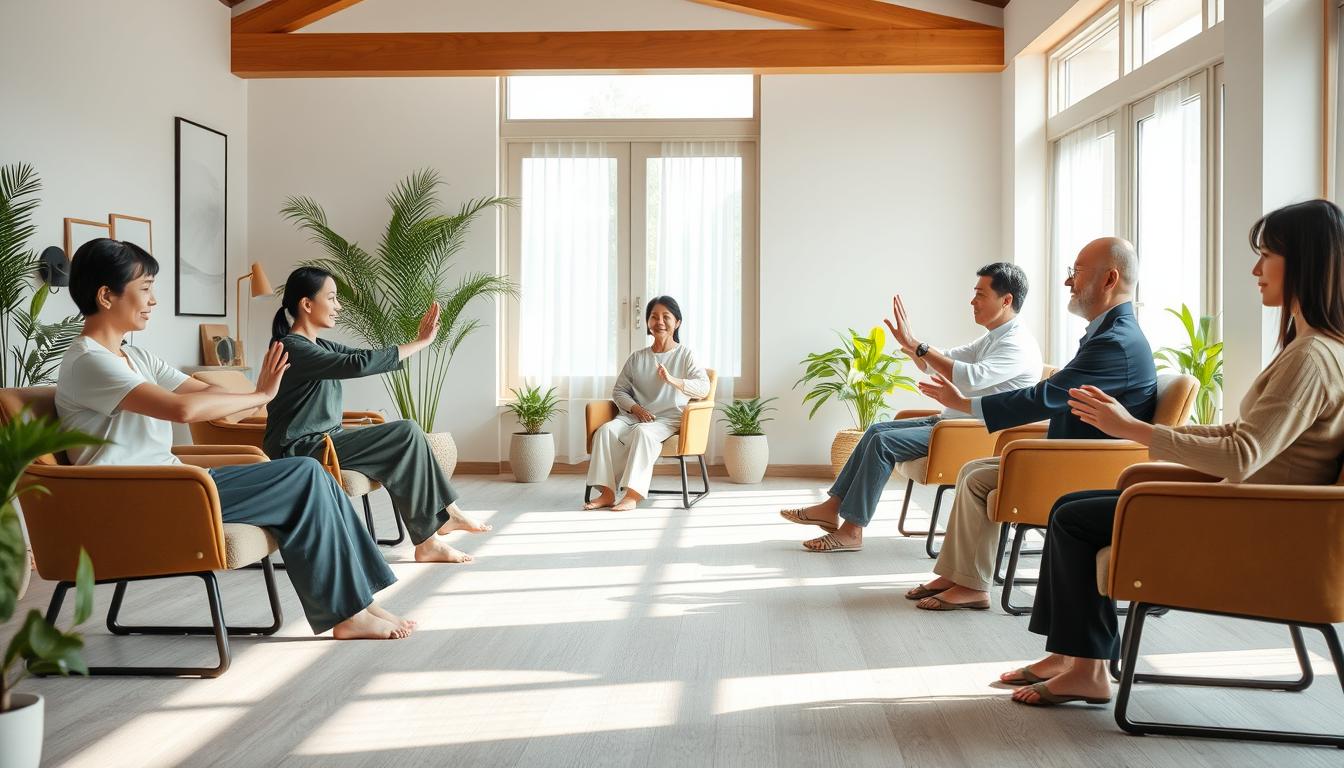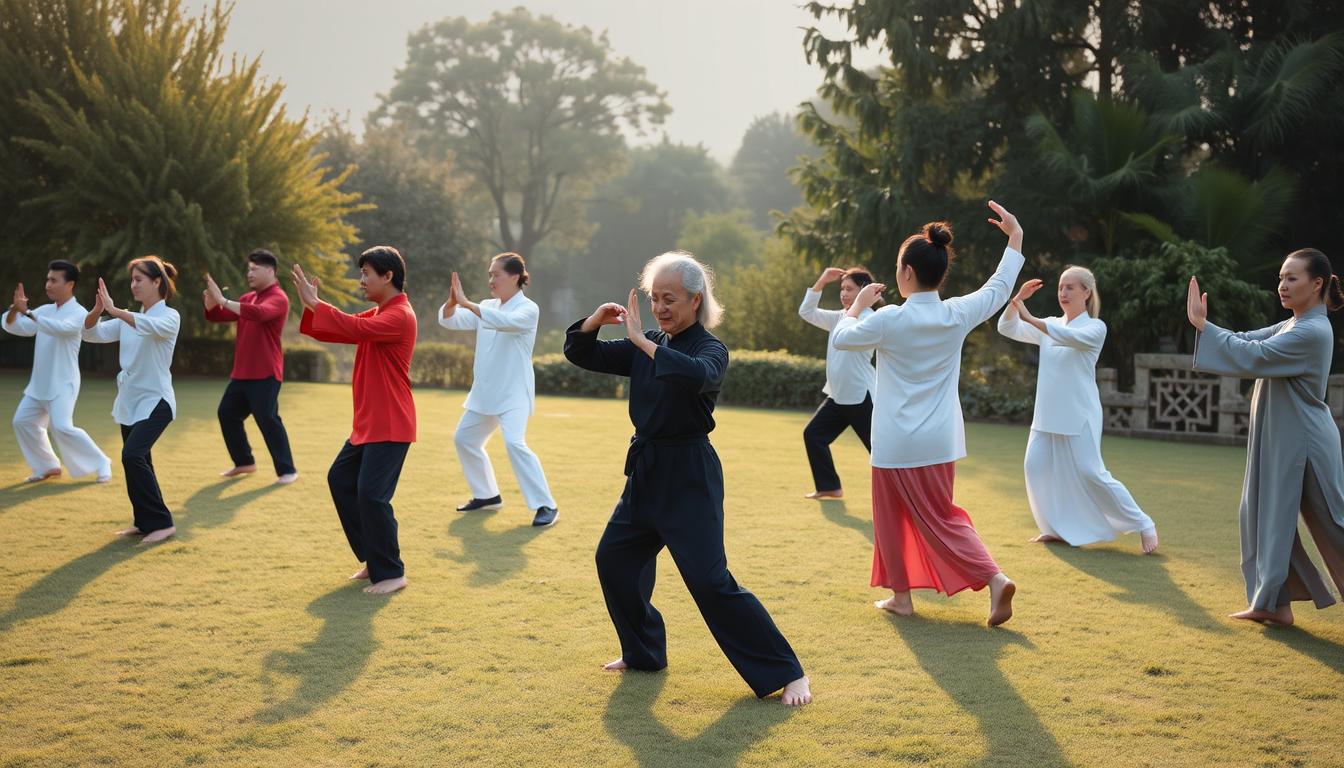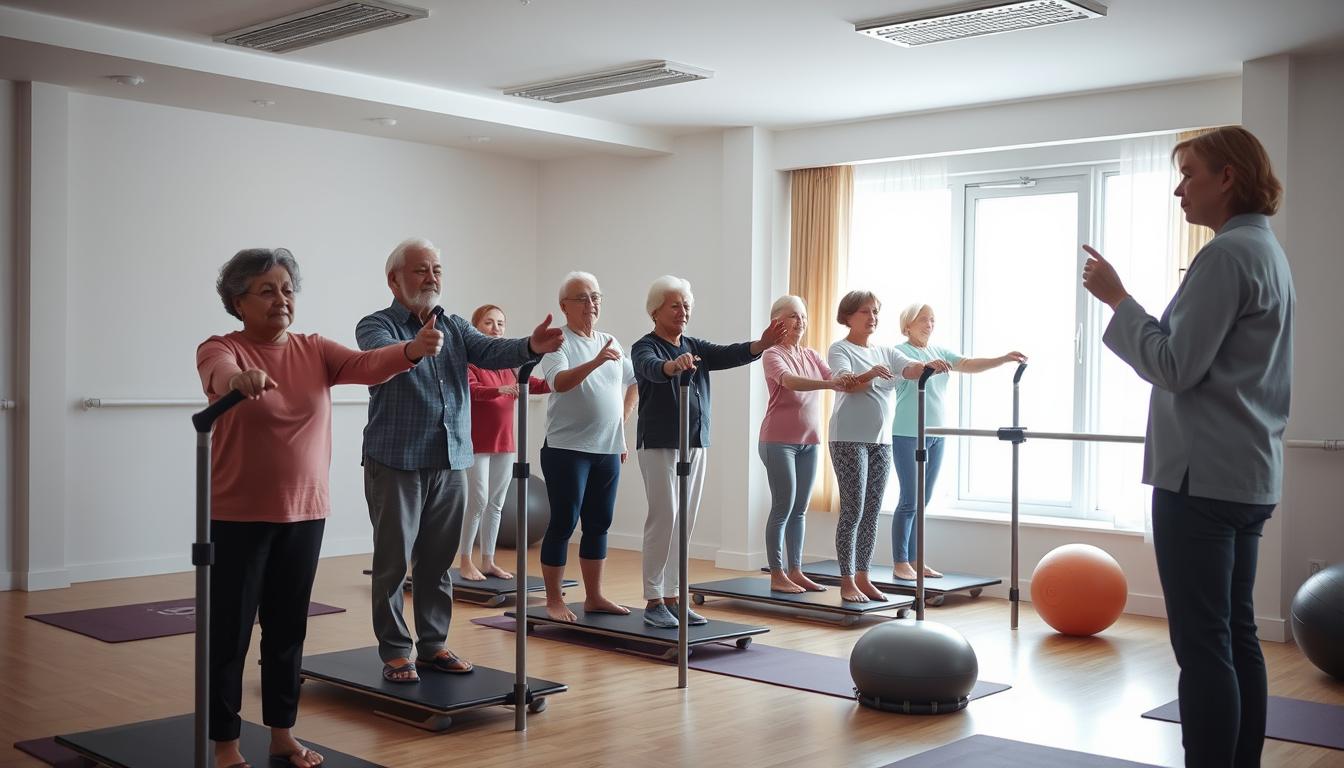While mind-body exercise and fitness are relatively new to the West, many of the formats used here have much longer histories. Some of the most popular mind-body exercise formats, yoga, Tai Chi chuan, Qigong and other martial arts, emerged in the East approximately 2,000 to 5,000 years ago as part of integrated spiritual, medicinal, philosophy and physical training systems.
Others like Pilates and the Alexander Technique emerged during the 20th century primarily as physical therapies, which purposely apply the mind-body connection for better results.
Yoga
This practice originated in India 3,000 to 5,000 years ago. Its objective is to allow practitioners to fully integrate mind, body, and spirit in order to achieve divine union.
Most modern practitioners focus primarily on the physical exercises, asana, associated with the practice. They desire the physical fitness and stress relief of yoga.
Today yoga is practiced worldwide with an estimated 300 million participants and over 20 million people in the United States alone practice yoga.
Yoga emerged as a well-rounded solution to many health woes of the 21st Century and is a mind body exercise that benefits physical, emotional, mental, and even spiritual health.
Yoga is a meditative tool that helps bring calm to the mind and strength to the body. Being that it is not simply a physical activity, but a broad approach to well-being it is safe to say that yoga may just be a miracle cure to energy renewal and total wellness.
In its broadest sense yoga is a system of mental, physical, and spiritual practices that aim to transform the body and mind with the use of three interlinked elements:
Poses (asanas)
Breathing techniques
Meditation
Yoga’s core belief is that the body must be respected and treated mindfully simply because it is the main instrument for growth. Yoga poses target physical fitness, blood circulation, digestive health, flexibility, joint strength, muscular endurance and even skeletal strength.
The breathing element is the source of life and in yoga the practitioners learns to control breathing in order to generate life.
Through mindfulness and meditation, yogis are able to connect with the deepest part of their mind.
These core elements combine perfectly to achieve harmony of the body, mind, and spirit, brining not only immense physical benefits to the body but also teaching the power and potential of the human being.
Tai Chi Chuan
Tai Chi Chuan or Tai Chi shares a 2,000-year history with Taoist martial arts practices and Traditional Chinese Medicine (TCM).
Tai Chi is a form of Chinese martial arts that in the modern world is a specific type of meditative movement that is used for health and wellness.
While it is often compared to yoga, it is a different type of mind body exercise. Unlike yoga, the poses, or movement in Tai Chi are never held, as it is a rhythmic type of slow flowing dance that keeps the practitioner constantly moving.
It uses a slow breathing technique combined with flowing choreographed postures to cultivate and direct chi (chee), energy or life force, for health and wellness. The purpose of Tai Chi is to balance and unite the body, mind, and spirit, by enabling the qi (chee), or life energy to adequately flow.
Tai Chi as a mind body exercise uses a combination of techniques to yield an introspective and meditative approach to physical and mental fitness. This enhances both emotional and physical well-being. Like other types of mind body exercise, it combines breathing with a mindful focus and movements with specific intended outcomes.
Three key elements combine to make Tai Chi supportive of both mental and physical health; they are movement, breathing, and meditation. The slow flowing movements of Tai Chi that mimic elements of nature naturally calm the mind, which alone brings with it a plethora of real benefits applicable to everyday life that are not found in traditional exercise.
Qigong
Qigong (Chi Kung) is the parent of Tai Chi and is often practiced alongside it. Qigong actually predates Tai Chi and informs some of its movements and philosophy. The practice focuses more on growing and managing existing internal energy rather than generating it as is the case with Tai Chi.
Qigong has deep roots in ancient Chinese health care and integrates physical postures, breathing and focused intention.
The name Qigong is comprised of two Chinese words. Qi (chee) means life force and represents all that flows through the universe. The word Gong (Kung) means a skill or accomplishment that is perfected through regular practice. When combined the word Qigong stands for cultivating energy and is a mind body exercise that benefits health and healing. It uses slow rounded sweeping movements and deep breathing to facilitate this process.
Like Tai Chi, Qigong practices can be classified as martial art, medical, and spiritual. All styles of Qigong have three things in common: posture, breathing and mental focus.
Various practices under the category of Qigong have particular purposes including the cleansing and healing of the body, the storage of qi (energy) or using the Qi to heal others. Qigong is highly adaptable, low impact and so versatile that it can even be performed by those in a wheelchair. It is accessible to any age group of any fitness level.
Like Tai Chi, Qigong provides serious benefits beyond that seen in traditional exercise because it includes and emphasizes the use of mind intent and breathing along with physical movement, making it a highly valuable form of alternative complementary medicine for many modern ailments and medical conditions.
A few of the benefits of Qigong include stress reduction, heart health, stamina, vitality and improved immunity. Qigong also helps with digestion, respiration, blood circulation, joint health, and depression.
Pilates
Joseph Pilates developed this therapeutic form of exercise as a young man to correct his physical frailties and predisposition to illness. He studied Greco-Roman fitness practices and gymnastics, yoga and other Eastern and Western forms of exercise to develop his system.
Pilates exercises require controlled breathing and movements, which focus on building the strength of the core muscles referred to as the Powerhouse.
Gyrokenesis or Gyrotonic Exercise
This system uses the breath, flowing, sweeping, and rounded movements, as well as energetic awareness to create space and strength in the spine and joints. It was developed over 25 years ago by former ballet dancer Juliu Horvath following an injury to aid his recovery.
This mode of exercise also offers an energetic component working with fluid and rhythmic oppositional movements push and pull to create balance and systemic integrity in the body and organs.
The Alexander Technique
The Alexander Technique teaches people to become aware of how they move and the level of exertion they apply to daily activities.
Where their method of movement creates tension or imbalance, this technique teaches practitioners how to adjust to correct the imbalance and use their energy more efficiently.
The Feldenkrais Method
Using natural movements, sitting, standing, reaching, etc., participants learn to move in ways, which support gains in flexibility and balanced movements. The method is primarily therapeutic.
In theory, participants’ creative application of natural movements creates new neurological pathways, which allow them to effectively compensate for an injury without creating further imbalance.



